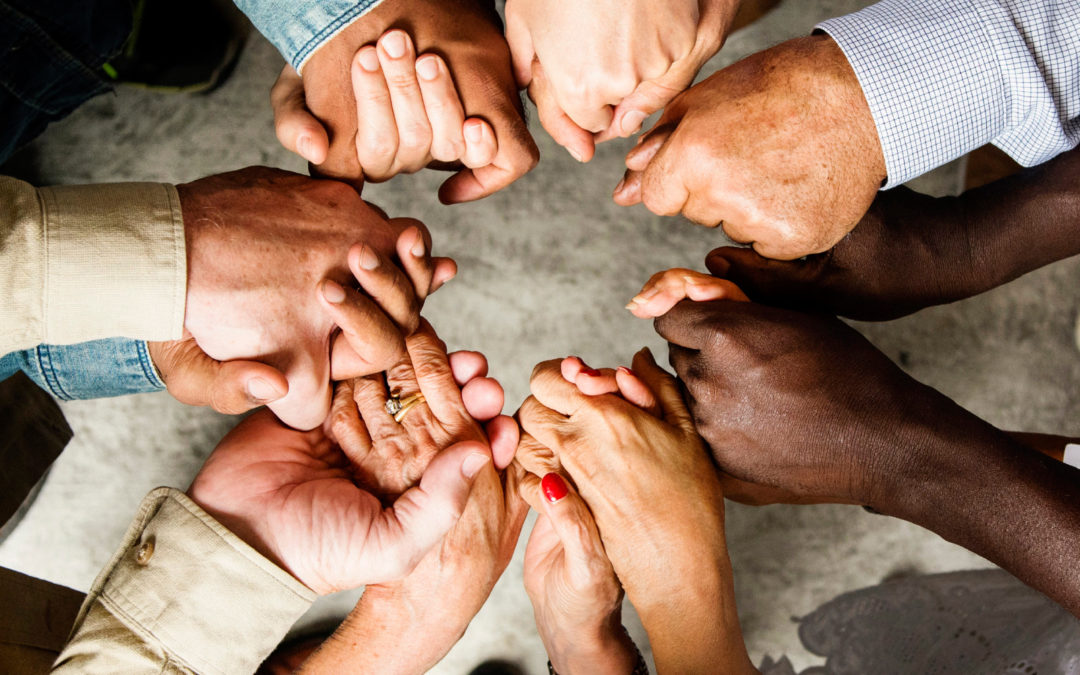by Sarah Carson—
Somewhere in the deep, dark recesses of my brain, I have several snapshots of a cartoon my mother used to play for my sister and me.
I don’t have a complete memory—just a few random snippets stuck in the gray matter of my amygdala. I can’t tell you what moral the cartoon was meant to impart, or whether we watched it once a week or once ever.
But in my mind’s eye—if I squint really hard and turn my head slightly to the left—I can just make out the torn cardboard of the VHS sleeve, a cartoon Jesus waving. I can replay a few seconds of the film in my head—our Lord and Savior in sandals and a long, flowing white robe, his wavy hair tousled by the wind.
He approaches two brothers who are in a docked fishing boat. “I will make you fishers of men,” he says. Then he turns and begins to walk along the beach. The brothers drop their nets and follow.
As we’ve already learned in the first two sessions of our winter Bible study, “Gospel of John: Meetings with Jesus” by Julie A. Kanarr, again and again, Jesus transforms the lives of those he meets. This month we continue that theme as we encounter a woman who committed adultery, a blind man and three of Jesus’ dear friends: Mary, Martha and Lazarus.
We learn, too, that “Jesus called us ‘friends’” (p. 11), and that the same love and mercy Jesus shares with those in the Gospels Jesus also extends to us. And this is why I’ve been thinking about the cartoon from my childhood.
As I read this month’s issue, I’ve realized that my image of Jesus may have been influenced a bit too much by my Sunday school days. When I picture Jesus at the pool of Siloam, mixing mud to heal a blind man, I see a cartoon Jesus, his two-dimensional fingers over the blind man’s clean, smiling face.
The real Jesus, of course, was anything but two-dimensional. “John’s Gospel reveals Jesus, the revolutionary Redeemer, as the Messiah for all people, marked by an uncompromising desire for unity in the Beloved Community,” Angela Khabeb writes (p. 20).
This “desire for unity in the Beloved Community” takes Jesus to places others dared not go in his time—which, in fairness, may not have made for a very good cartoon. I mean, can you imagine young children everywhere, inspired by what they’ve seen on television, rushing to courthouses, urging adults to choose forgiveness over punishment? Or would that be exactly the kind of thing Jesus would want to see?
“In Jesus, [God] stepped outside social boundaries and long-held rules about the place of love and sexuality in culture,” Catherine Malotky reminds us (p. 40.)
The real, three-dimensional Jesus demands more of us than just following him along the beach. He calls us to love as he loves, to practice true, radical friendship.
“Jesus is talking about sacrificing or offering up oneself as something entirely necessary for the sake of the friend,” writes Anna Madsen (p. 13). How? By “welcoming, feeding, healing, forgiving, exhorting, challenging, reframing, remaining and dying.”
Would this Jesus make for good television? I’m not sure. But I am certain that this Jesus is a far more memorable one—one whose transformative love brought Lazarus out of the tomb, still wrapped in his burial clothes; one whose lasting friendship could transform not only our lives, but the world—if only we dare to follow his lead.
Sarah Carson is associate editor of Gather.
This article appeared in the March January/February 2019 issue of Gather magazine. To read the full article or more like it, subscribe to Gather.



`The article was challenging. Thank you!